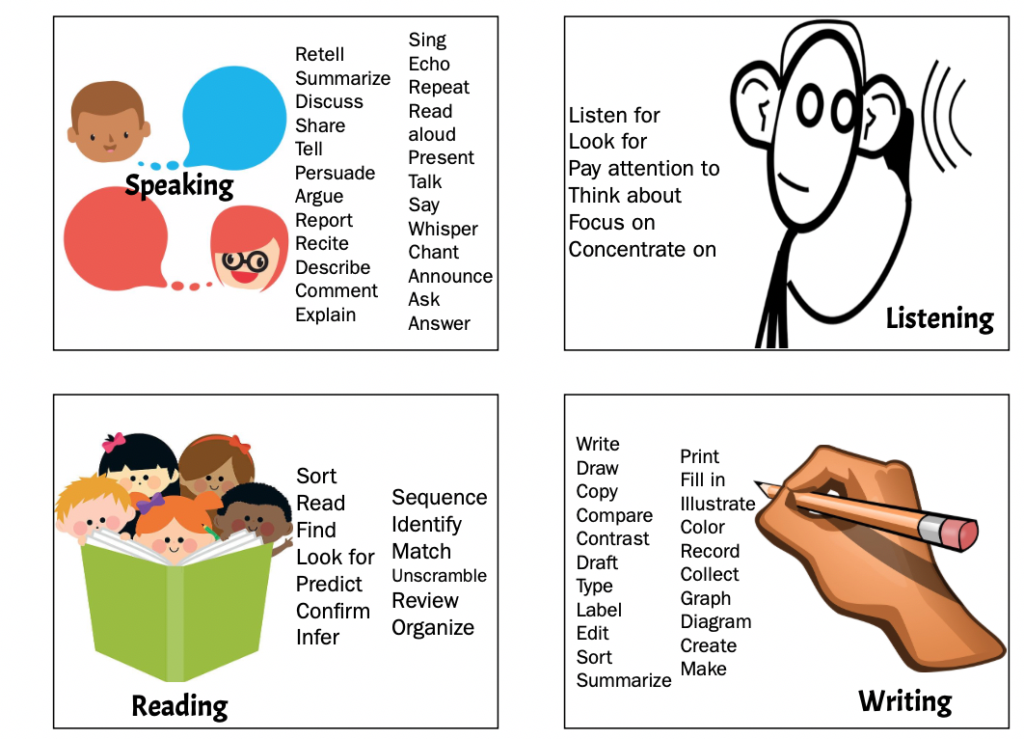When I first learned I’d be co-teaching, I was excited and anxious. I was a newer teacher with little experience in my discipline, and now I’d be working with someone else. I didn’t know where to begin. Fortunately, during my master’s program, I was introduced to the Sheltered Instruction Observation Protocol or SIOP model. One of the first things I learned was the importance of creating and displaying clear content and language objectives. Let’s talk about content and language objectives in co-teaching and how you can use them to guide your teaching practice and foster a great relationship with your co-teacher.
I vividly remember co-teaching a 9th-grade living environment class at a high school. We were covering complex topics, and seven English Language Learners (ELLs) were in the classroom. The Living Environment teacher knew the content very well. She could teach the content in her sleep. While she focused on the content, I realized there needed to be language objectives. One of the first things I learned in my master’s program was the importance of creating and displaying clear content and language objectives. Without language objectives, my ELLs were struggling with the material and the language itself. Let’s talk about language objectives, how they differ from content objectives, and how to use them to guide your teaching practice and foster a great relationship with your co-teacher.
What are Content and Language Objectives?
Content Objectives
Content objectives specify what students should know and be able to do by the end of the lesson. They are the objectives you and I are most familiar with. These objectives are aligned with curriculum standards and focus on the content or the subject matter. For example, in a living environment class, a content objective might be: “Students will understand the process of photosynthesis.”
Language Objectives
Language objectives focus on students’ linguistic skills to achieve the content objectives. These include vocabulary, grammar, language functions, and reading, writing, speaking, and listening skills. For example, a language objective for the same lesson might be: “Students will use key vocabulary (e.g., chlorophyll, photosynthesis, sunlight) to describe the process of photosynthesis.”
If content objectives are the destination, language objectives are the directions. Language objectives tell your students how they will reach their destination or achieve the content objective. I may have just come up with that analogy. You heard it here first, folks!

Why are they important?
Clarifies Expectations
Language objectives let students know exactly what linguistic skills they are expected to develop. They aren’t just for the students but for you, the teacher. Having the language objective set is honestly a breath of fresh air. I’m coining a new term guys! Language Objective Clarity, or LOC. LOC is when students have the clarity needed to help them focus on the language demands of the lesson, not just the content. Eh, that’s a working definition.
Enhances Comprehension
I display language objectives before and again at the end of the lesson. I’ll either have them in my Google Slides presentation or write them on the board. When language objectives are clearly defined and integrated into the lesson, ELLs can better understand and engage with the content. This dual focus on content and language facilitates deeper learning and retention.
Supports Language Development
Once you have your language objective, the next step is to work to provide ample opportunities for students to practice and develop language skills in context. This is crucial for ELLs who must build academic and social language proficiency.
Assessment
There are different co-teaching models. The core content teacher will often assess content knowledge because you may not be well-versed in the content. That is okay. So what do you do? Language objectives provide a framework for your assessment. They allow you to assess language development.
How to implement language objectives in co-teaching
The importance of collaboration
Implementing language objectives in co-teaching requires strong collaboration between co-teachers. I cannot stress this enough. One of the action items I highly recommend for new co-teachers is to get together over lunch or a cup of coffee and discuss what co-teaching ELLs will look like for both of you. Discuss experience, teaching styles, and preferences. Get to know each other. Identify a co-planning period. Co-teaching falls flat on its face without a co-planning period where co-teachers can meet regularly to discuss lesson plans and identify objectives. From there, you can communicate the importance of language objectives for ELLs and you as well because language objectives serve as the roadmap. You can lead language objectives as your co-teacher focuses on the content. Working together, you can create lessons that are accessible and engaging for all students, especially ELLs, who have their own unique set of challenges.
Collaborative planning
Here is a simple workflow you can follow with a co-teacher.
-
- Identify the content objective: Your co-teacher may already have planned content objectives for their lessons, but this may only sometimes be the case. I found it challenging to create language objectives with a missing content objective.
- Determine Language Demands: Discuss the language demands of the lesson. What vocabulary, sentence structures, and language functions will students need to master the content? This step is crucial for identifying the appropriate language objectives.
- Set the language objective: Based on the language demands, set a clear language objective and provide ample opportunities for students to meet the objective.
Next Steps:
Now that you understand the importance of content and language objectives, it’s time to discuss the next component of the SIOP model: Building Background Knowledge. Check out my next article Why you need to build background knowledge to learn how you can make it easier for students to learn new content. Work smarter, not harder!